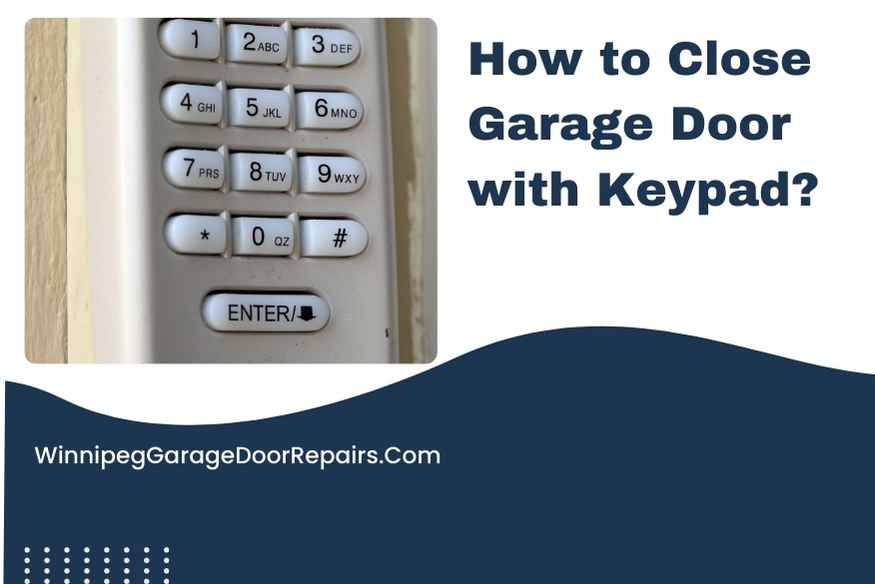Have you ever arrived home to find your garage door remote unresponsive? Or maybe you’ve needed to close the garage from the outside without access to the remote. Knowing how to operate your garage door with a keypad is not just convenient; it’s a necessity for the modern homeowner.
This guide will take you through the process of securely closing your garage door using a keypad, ensuring peace of mind and ease of access.
Step-by-Step Guide to Closing Your Garage Door with a Keypad
Closing your garage door using a keypad may seem daunting, but it’s a simple process once you know the steps.
Step 1: Approach the Keypad
To reset Craftsman garage door keypad without a code, first locate the keypad, typically installed on the garage’s exterior, near the door. Ensure it’s within reach and not obstructed by objects or debris.
Before attempting to reset, check the keypad’s condition; if it looks worn or damaged, it may need attention to ensure the reset process goes smoothly.
Step 2: Enter the Security Code
The security code is your key to operating the garage door. On the keypad, enter the code you’ve set during the setup process. This code is typically 4 to 6 digits long.
If you’ve forgotten the code, it’s often retrievable from the garage door system’s manual or can be reset following the manufacturer’s instructions. After entering the code, press the button that triggers the door to close, often labeled as “Enter” or “Close.”
Step 3: Confirm the Door’s Closure
Watch the door as it closes to ensure it moves smoothly without any interruptions or irregularities.
It’s crucial to ensure that nothing obstructs the door’s path to prevent damage to the door or harm to people or pets. Once the door fully closes, listen for any sounds that indicate it has latched securely.
Step 4: Ensuring Safety and Security
After the door has closed, consider taking the next step in home security by opting to install garage door keypad. This addition not only verifies that the door is locked and secure, especially when leaving the house unattended but also integrates seamlessly with some models featuring the ability to disable the opener or engage additional security locks directly from the keypad, thereby enhancing your home’s security.
Troubleshooting Common Issues
Even with straightforward operations, issues can arise. Here’s how to tackle some common problems:
- Battery Replacement: A non-responsive keypad often signals a need for battery replacement. Regularly check and replace the batteries to avoid unexpected issues.
- Code Reset: If the correct code doesn’t work, resetting it according to the manufacturer’s guidelines can resolve the issue. This might require accessing the main garage door opener unit.
- Signal Interference: Ensure there’s no interference or blockage between the keypad and the garage door opener’s receiver. Sometimes, electronic devices or metal structures can disrupt the signal.
- Professional Help: If the problem persists, consulting a garage door professional is advisable. They can diagnose and repair issues related to the keypad or the door mechanism.
Maintaining Your Garage Door Keypad
To ensure your keypad remains functional and reliable, perform regular maintenance. Clean the keypad surface to remove dirt and grime that could interfere with button functionality.
In harsh weather conditions, protect the keypad from extreme temperatures, moisture, and direct sunlight. Changing your security code periodically can also enhance your system’s security.
Conclusion
Understanding how to close your garage door with a keypad is an essential skill for today’s homeowners. It not only adds convenience but also improves the security of your home.
By following these steps, you can operate your garage door smoothly and troubleshoot common issues.
Regular maintenance of the keypad ensures it remains a reliable tool for managing access to your garage, giving you confidence and control over your home’s security.







